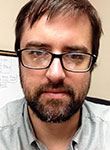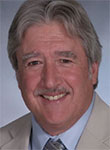Viticulture journal toasts vineyard protection research
By Blaine Friedlander



By answering an old pest management question, a former graduate student and two professors in Cornell’s young wine and grape program have earned 2015 scientific paper of the year honors from the American Society for Enology and Viticulture.
Misha Kwasniewski ’09, Ph.D. ’13, who was among the first students in Cornell’s viticulture and enology undergraduate major, along with Gavin Sacks, associate professor of food science, and Wayne Wilcox, professor of plant pathology and plant microbe biology, were honored – in the viticulture category – for their research, “Persistence of Elemental Sulfur Spray Residue on Grapes During Ripening and Vinification,” which appeared in the American Journal of Enology and Viticulture in December.
For grape producers and winemakers, the fungus powdery mildew is a fierce enemy. For centuries, sulfur has been used to control fungal diseases; it is inexpensive and can be used in organic vineyards. But sulfur residue hinders the fermentation process and produces off flavors and aromas – namely, it can form hydrogen sulfide, with a noxious “rotten egg” smell.
“Elemental sulfur is one of the most widely used pesticides in vineyards becauseof its effectiveness in controlling powdery mildew,” said Sacks. “The challenge is keeping this sulfur out of the fermentation process. There’s very little data to suggest when a grower should cease spraying sulfur during the growing season.”
How far in advance of harvest should grape growers stop applying sulfur?
For grapes destined to become red wine, a conservative estimate is six weeks before harvest. Growers who apply sulfur within four weeks of harvest stand an increased chance of having excessive sulfur residue, although weather and other factors may lessen it. For white grapes, spraying can continue much later because standard wine production practices largely remove sulfur residue.
As a graduate student, Kwasniewski spent three growing seasons at the New York State Agricultural Experiment Station in Geneva, New York, collecting post-application data for sulfur and examining the element’s persistence during each growing season. He is an assistant professor at the University of Missouri, where he leads the enology program.
Media Contact
Get Cornell news delivered right to your inbox.
Subscribe